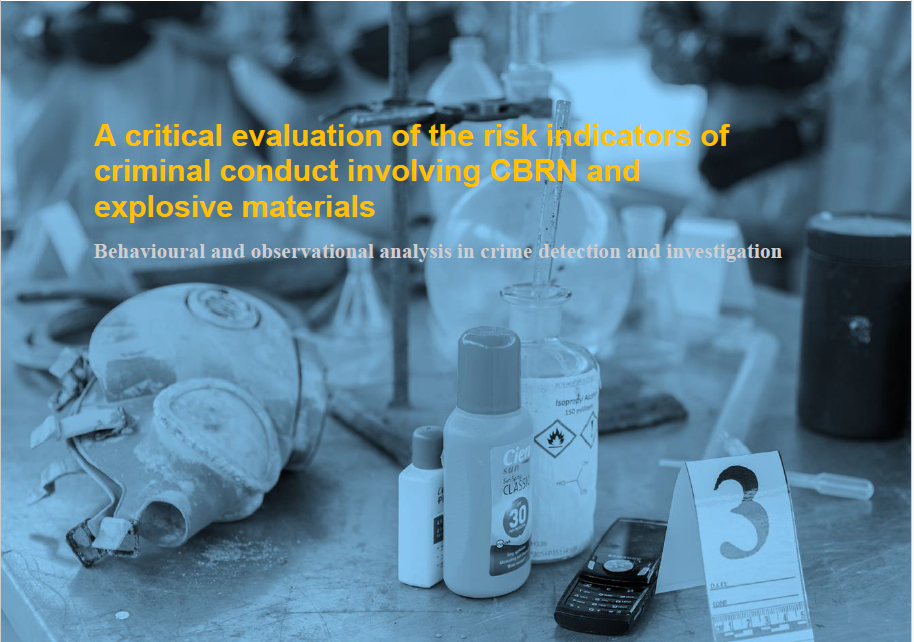
19 Feb A critical evaluation of the risk indicators
Terrorist attacks using explosives and CBRN (Chemical,
Biological, Radiological and Nuclear) materials have been present throughout
history. While the frequency of CBRN terrorist attacks is relatively low
compared to those with explosives and other types of weapons, it is crucial to
treat the efforts of both terrorist organizations and individuals with
appropriate gravity in order to avert catastrophic consequences. Identifying
warning signs that indicate criminal behaviour is crucial for preventing
planned crimes or terrorist attacks, and there is a need for more precise
coverage of potential risk indicators related to CBRN and explosive crimes.
This research aimed at examining and scrutinizing
possible warning signs associated with planning and conducting terrorist
attacks using CBRN and explosive materials. The research was implemented in
three phases.
Ø First, comprise the systematic literature
review.
Ø In the second phase, the case studies and
CCTV records from past cases from Europe, USA, Australia and Asia were analysed
and the aim was to create a list of risk indicators and categories for future
reference by developing a methodological tool.
Ø The last phase represented a survey in which
the practitioners from European Law enforcement and Intelligence Agencies
critically assessed the list of risk indicators and their categories created
based on the previous two steps of the research. The last goal was to gain the
agreement and endorsement of law enforcement officials from different European
nations regarding the validity and importance of recognized risk indicators and
their categories, as well as their ranking for use in operational tasks, investigations,
and training.
The majority of the respondents found the identified
categories and risk indicators as reliable and relevant for their operational
activities and investigations. For the second research question, the survey
results prioritized categories of risk indicators that are most suitable for
the detection tactics of investigators and intelligence officers. The third
research question examined the ease of observing identified risk indicators,
with the category of technological detection/air sampling alarm risk indicators
ranking as the easiest to detect. Finally, the survey found that the identified
risk indicators are useful for training activities of security entities.
Several final comments and recommendations from participants were also
discussed, emphasizing the importance of considering multiple factors when
identifying risk indicators and the value of the comprehensive list of
identified risk indicators. The publication also examines some terrorist
theories, the advantages, limitations, and the ongoing debate surrounding the
use of profiling in protective security.
If you are interested in reading research results
(final version), feel free to visit the Researchgate page: https://lnkd.in/dSpHxRXf
DOI:10.13140/RG.2.2.27922.43205
Those who are from Law enforcement or Intelligence
agencies can get access to the NON-PUBLIC Version upon request on email: kolencik@isemi.sk (from the official governmental email
address).
Author(s):
Marian KOLENCIK, International
Security and Emergency Management Institute, Slovakia




